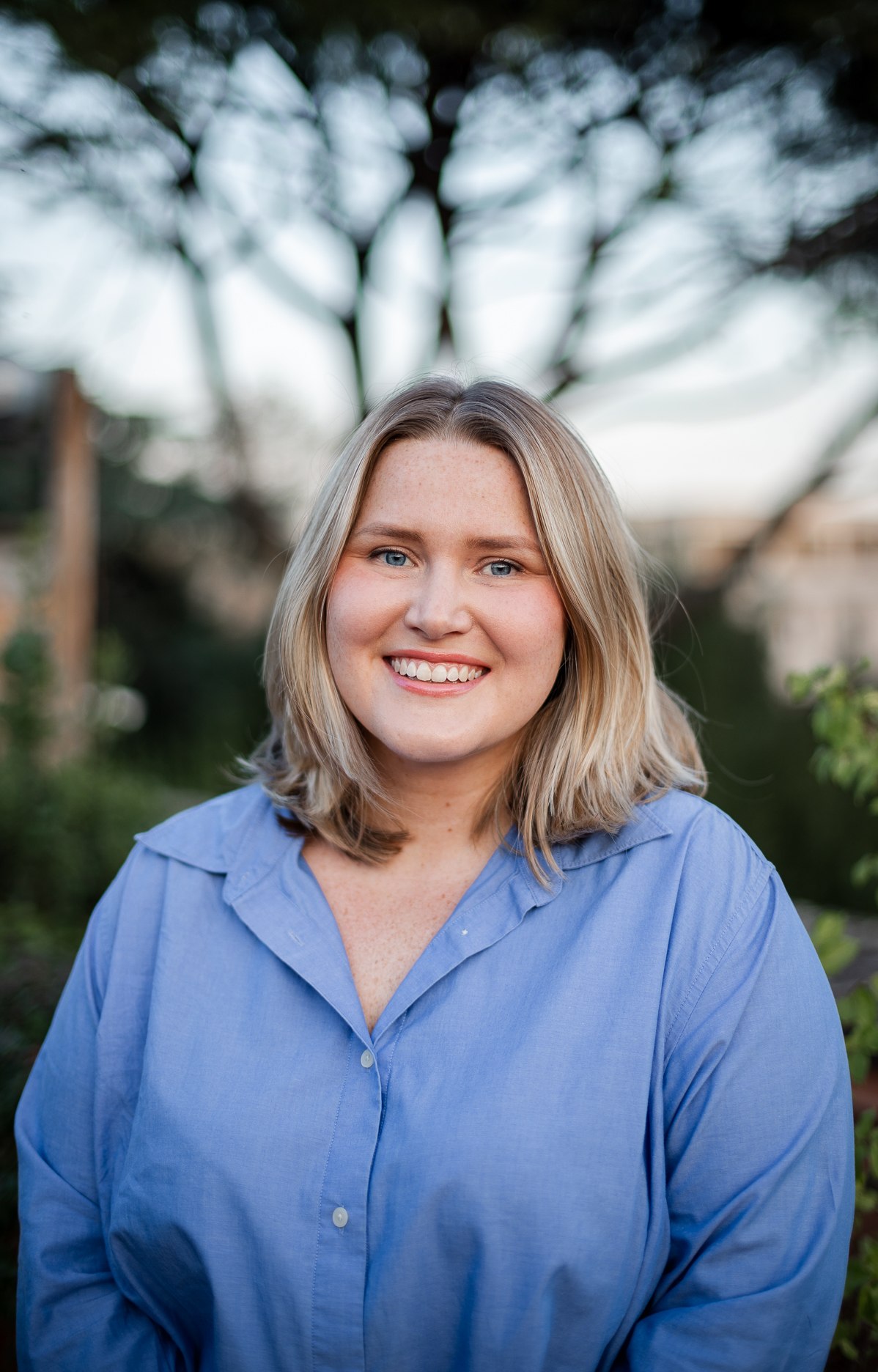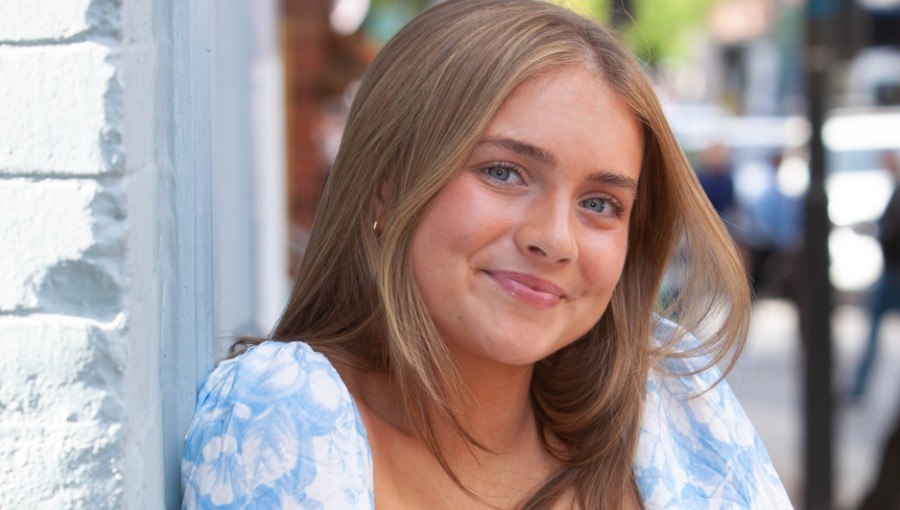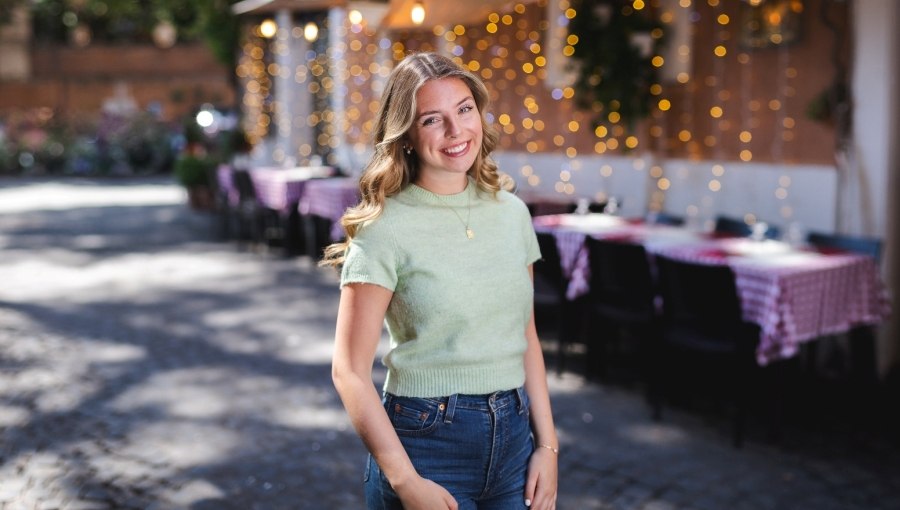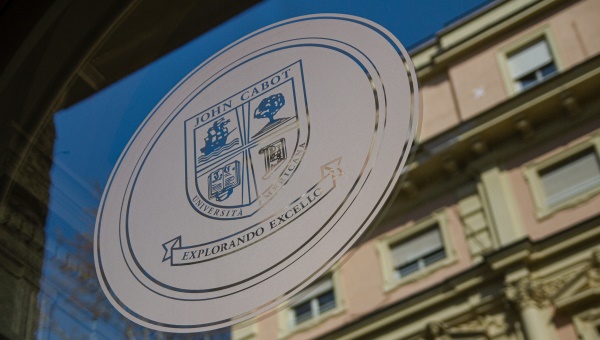The Art Reporter: Meet Art History Major Aleksandra Nasobina
Aleksandra is pursuing a degree in Art History and is President of the JCU Art History Society. She also runs a TikTok channel, The Art Report, where she discusses all things art.
Tell us about yourself.
I am what they call a “third culture kid:” my parents are of Russian descent, but I was born in the Czech Republic and then raised in Cannes, France. I’ve always attended international schools, so English is basically my mother tongue.
Having been raised in an international setting, I’ve always loved traveling and meeting people from all over the world, and John Cabot is exactly that. I know this is something special, and even though I’m used to it, I still don’t take it for granted.

What made you decide to study Art History at JCU?
I married an Italian and I moved to Italy five years ago. I initially pursued a degree in Business Administration from the University of Monaco, and I worked in that field for a few years until the pandemic happened. During lockdown, I started making videos online about art history, since I’ve always loved it and I’ve always been exposed to it thanks to my parents. I was a little afraid to pursue it academically or professionally, but Covid made me rethink my life choices. So, I started learning as much as I could about art history.
A friend of mine, whom I got to know thanks to my TikTok channel, is an alumna of JCU, and she recommended it to me. I was really surprised to learn about it, especially because it’s an American university in the center of Rome, which is the best possible place to study art history. So, when my job wasn’t available anymore because of the pandemic, I was happy to make this big life change and move to Rome to attend JCU. I love what I’m doing: I wake up every morning and look forward to attending classes.
What is your impression of JCU? Is there a class or professor that has impacted you?
I think that the Art History department is like no other. Its collegiality is something I’ve never experienced to this degree. I have endless admiration for all my professors, like Sarah Linford, Inge Hansen, Laura Foster, Nicole Paxton, and Sharon Salvadori, who is currently my thesis reader, and many others. They are not just professors – they are mentors, and they are intellectually generous. They will give you support and good advice on how to progress in your academic journey. I also feel the same way about all the art history students here. It’s just an incredible community.
Tell us about your thesis.
I analyze the Chapel of Saint Zeno in Rome, which is one of the best-preserved monuments from the 9th century. Inside, there is a mausoleum for the mother of Pope Paschal I, Theodora, and a portrait of her with the inscription “Teodora Episcopa,” which translates to “Theodora the Bishop.” It’s a very unusual inscription; we don’t have any other precedents like this one. I am analyzing this from a gender perspective with the help of Professor Salvadori’s expertise on the Medieval period and gender.
How and why did you decide to become the president of the Art History Society?
I have been a member of the Art History Society from day one. I joined as soon as I came to JCU because I wanted to be around other people who love art history as much as I do, and that’s exactly what the Art History Society is. I’ve taken various roles over the years: I’ve been a co-curator, vice president, and eventually, when my predecessor graduated, I became president.
We are very proud of what we do. We run a professional gallery here on campus, the 4m2 Gallery, where we curate exhibitions for professional artists from Rome. Just this year, we’ve had two shows already, and the current one is called “Tre lavori di nicchia,” with works by artists Luca Grechi, Alice Papi, and Arianna Pompeo.
Let’s talk about your TikTok channel, which you started in 2020 and now has more than 100,000 followers.
I actually have two channels. On my first channel (@ciaosasha), I talked about lots of different things, from eco crimes to current political events. But one of my most popular series, I noticed, was about controversial art. I particularly enjoyed doing that, so I made a second channel dedicated to only art history, called The Art Report.
The Art Report is my main focus since I’ve come to the realization that I just want to work in the art history world, in all of its shapes and forms. What I’m trying to do with The Art Report is to make art history and its complex topics more accessible and digestible to everyone. And I guess a TikTok video is the perfect format for that: you have to keep it short and to the point, even though sometimes that can be a challenge since you have to think strategically about the narrative and try to condense everything into it.
What is your process for making a TikTok video?
The format is always the same, which is me talking into a microphone and looking into the camera, but I also do vlogs sometimes. It’s all very spontaneous: I think about what I want to talk about, then spend a couple of hours researching it and writing a script. Sometimes I really stick to the script, and other times I go with the flow and see what happens. You don’t always need a strategy to convey an idea.
I have playlists that help give a bit of structure to my content. I have recurring themes: knowing more about women artists is something that fascinates me, so I’ve talked a lot about that – and I don’t like the term “women artists,” because why can’t they just be artists? But unfortunately, we’re still re-dressing the canon. I also have more of a fun playlist, which is art world scandals. There’s always some sort of big story happening in the art world.
You made a video for JCU’s Instagram page to promote the Art History department. Tell us about the process behind it.
I was approached by the department because they’d heard that I make videos on TikTok. So, me, and fellow students Alison Ladd, Luca Guimaraes Fustagno, and Sonja Garcia spent a whole day shooting and re-shooting, and we had a blast. We went to many different locations. We had a script based on this misconception of art history as a history of facts and figures. We wanted to show its dynamicity and how there’s a lot to see and do at JCU, especially in the art history department. We also wanted to put value into the campus by showing all the views, the library, and all the green that we have around.
With the rapid evolution of technology, why do you think art history should be studied, and what keeps it relevant today?
I believe that people generally have this misconception that art history is already set in stone as if it were only about learning facts. But actually, it’s an extremely dynamic field: we’re rethinking everything all the time. Studying our past through art helps us understand who we are today and where we’re going in the future. Our cultural identities are shaped by art, it’s constantly changing our perceptions of who we are, and that’s why I think it’s important to study it.
Do you have any plans for the future after graduation?
I want to stay in academia and keep studying if I can. I’m thinking of pursuing a Master’s degree and later a Ph.D.
What would you say to prospective students who are considering studying art history at JCU?
I would say, do it, and obviously, also join the Art History Society because that’s the community on campus. That’s how I met all the friends I’ve made here. Another piece of advice would be to take some classes outside of your range of interests: you can gain additional skills and will often end up finding something you actually love. So, take advantage of the American education system, which allows you to mix and match courses.





